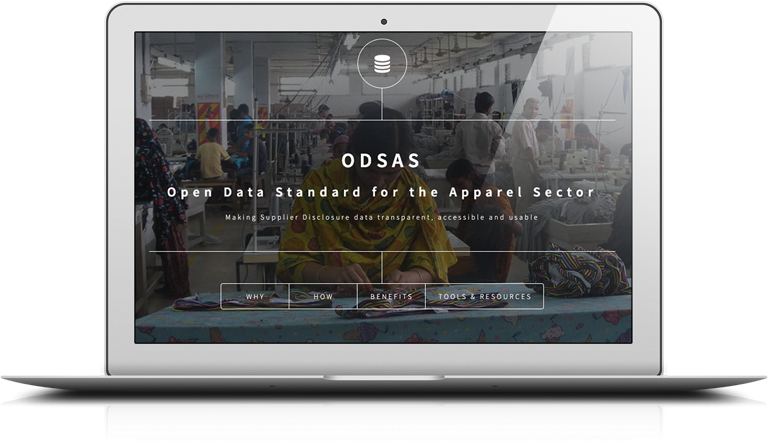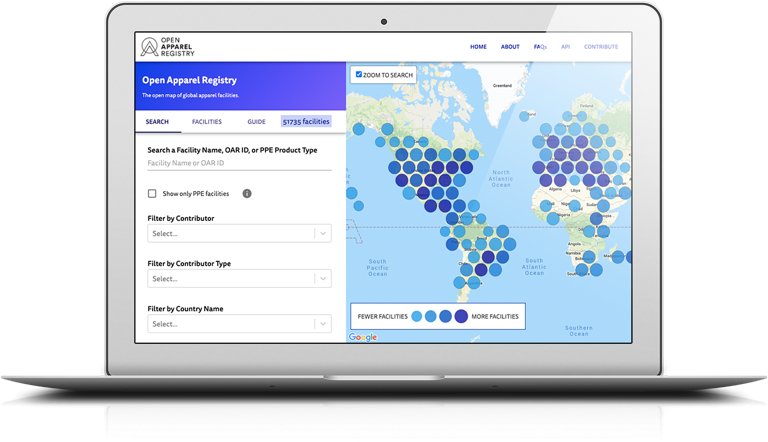Good practices

Making disclosure effective
The ultimate goal of publishing lists of supplier factories is to make them useful for workers, companies, and civil society. By following good practice, brands and retailers can avoid common issues that undercut the usability of published supply chain information.
1.
Make sure the list is easy to find
Brands and retailers should make sure to house their factory information in a central, easy to find place on their websites.
2.
Make sure the list clearly states:
- The date the information was last updated and how often the information is publicly updated.
- What precisely is being published and what definitions are being used.
- Whether all authorized subcontractors used by cut- make-trim factories for processes to complete a brand’s products are being published.
- The aggregate volume of business that is captured by the disclosure and the percentage of total supplier factories published.
- Any exclusions from the disclosure and impending plans to expand disclosures.
3.
Align with the Open Data Standard for the Apparel Sector (ODSAS)
Many apparel companies publish information on their websites but do not make the information easily searchable. Manual and individual searches are extremely time-consuming, making it difficult to find out quickly, for example, which factories are on a particular apparel company’s supplier lists.
To harness the full potential of published factory information, with maximum efficiency and minimize time wasted, the coalition strongly urges companies to align their published factory lists with the Open Data Standard for the Apparel Sector (ODSAS).

4.
Submit the Information to the Open Supply Hub
The Open Supply Hub (previously known as Open Apparel Registry) has a database of global factory information, collating disparate factory lists into one central, open-source map that is publicly available, searchable, and free of cost, enabling workers and others easy and quick access to information.

move beyond the transparency pledge standard
The Pledge does not set a ceiling, but rather a floor, on what brands should publicly report. The full range of transparency practices in the garment industry should be broader and more holistic.
Brands and retailers should move beyond the minimum standard laid out in the Pledge:
- Publish additional details about factories
- Publish other parts of the supply chain
Many companies that are either already fully aligned or in close alignment with the Transparency Pledge standard are already doing this. A snapshot of good practices, which is not comprehensive, is captured below.
Examples of additional data about supplier factories that some brands currently disclose
| Year from which a supplier factory began producing for a brand | Patagonia |
| Gender breakdown of workforce in each factory | ASOS, Benetton, Columbia, Debenhams, Lindex, Marks and Spencer, Nike, Patagonia, Pentland Brands, Shop Direct |
| Migrant workers as a share of workforce in each factory | Nike |
| Presence of unions or worker committees in the factory | John Lewis, Marks and Spencer |
| Brands’ internal ratings of supplier factories | H&M indicates how their supplier factories are scored among its internal ranking systems |
| Brand’s factory ID number, which is printed on garments sold by brands from the factory (enabling consumers to identify precisely which of the brand’s supplier factories produced the garment) | Columbia publishes this data on its website and includes the applicable factory ID number on its product labelling. |
Going beyond tier-1 factories
| Spinning or textile mills | C&A, H&M, Levi Strauss, and Patagonia produce some information about spinning or textile mills that produce the yarn used in their garments. |
| Tanneries | H&M have begun to disclose information about tanneries in the company’s supply chain |